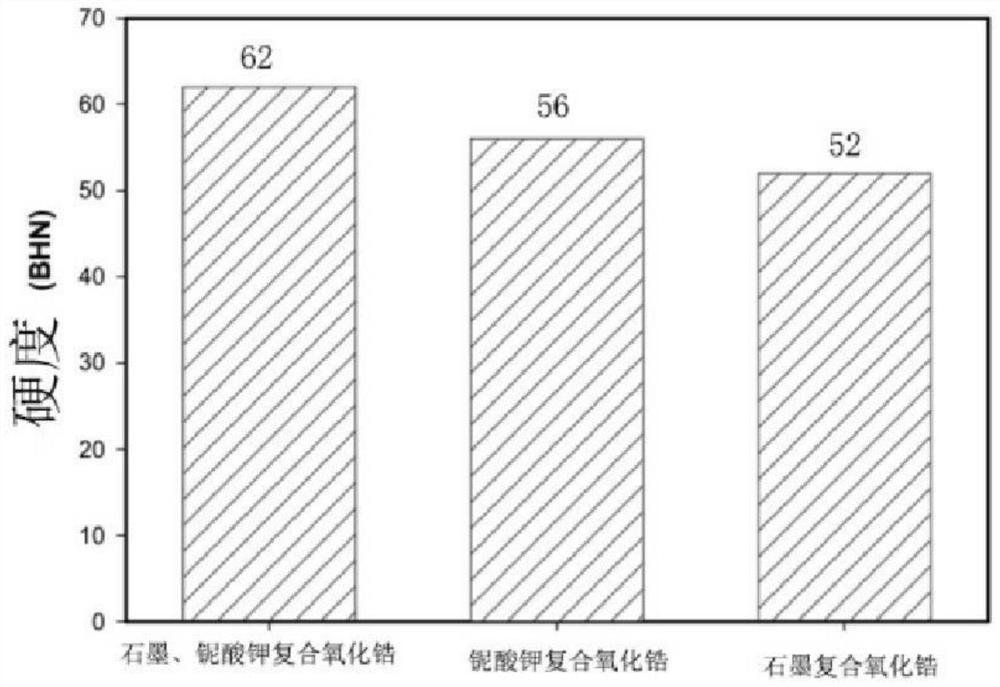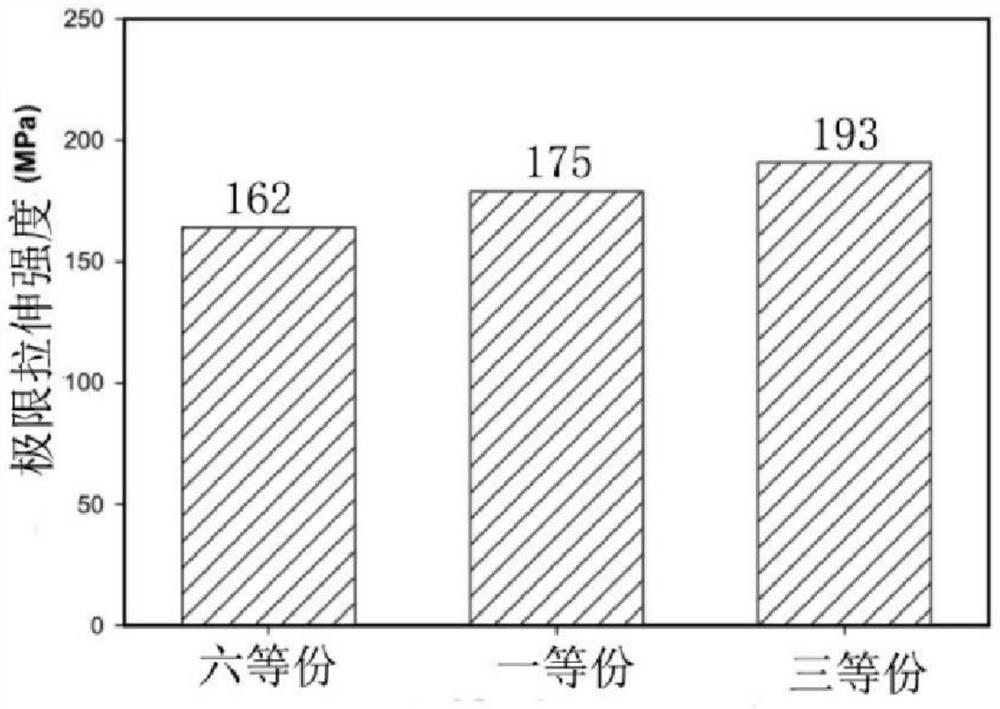Mobile phone rear cover material and preparation method thereof
A technology for mobile phone back cover and raw material, applied in the field of mobile phone back cover material and its preparation, can solve the problems of surface density, poor oxidation resistance and yield strength, etc.
- Summary
- Abstract
- Description
- Claims
- Application Information
AI Technical Summary
Problems solved by technology
Method used
Image
Examples
example 1
[0029] 1) Lower the temperature of the stirrer to 150°C, add the potassium niobate raw material that has been soaked in dedecyl diammonium, accounting for 15% of the total weight of the mobile phone back cover material, and accounting for 15% of the total weight of the mobile phone back cover material. Add bismuth oxide with a content of 2%, and continue stirring for 6h.
[0030] 2) The product of step 1) was heated to 750° C. in a resistance furnace and stirred mechanically. 3% by weight of granular graphite was added. The stirrer performs mechanical agitation to form a fine vortex during the zirconia overlay. The stirrer was rotated at 250 rpm for 8 minutes. Graphite was added in three equal portions every 20 minutes.
[0031] 3) in step 2), add degassing agent hexachloroethane (C 2 Cl 6 )2kg, to remove all unwanted absorbed gas in the molten metal
[0032] 4) Add binder to the product of step 5), stir, pour into a cast iron preheated permanent mold with a size of 200 ...
Embodiment 2
[0034] 1) Lower the temperature of the agitator to 150°C, add potassium niobate, 65-80% of zirconia, The total weight percentage of the mobile phone back cover material is 2% bismuth oxide, and the stirring is continued for 6 hours.
[0035] 2) The product of step 1) was heated to 750° C. in a resistance furnace and stirred mechanically. 3% by weight of granular graphite was added. The stirrer performs mechanical agitation to form a fine vortex during the zirconia overlay. The stirrer was rotated at 250 rpm for 8 minutes. Graphite was added in three equal portions every 20 minutes.
[0036] 3) in step 2), add degassing agent hexachloroethane (C 2 Cl 6 )2kg, to remove all unwanted absorbed gas in the molten metal
[0037] 4) Add binder to the product of step 5), stir, pour into a cast iron preheated permanent mold with a size of 200 mm in length and 25 mm in diameter, sinter at high temperature, and perform a hardness test.
[0038] 5) Use a spherical indenter with a diame...
Embodiment 3
[0040] 1) Lower the temperature of the agitator to 150°C, add potassium niobate, 80% zirconia, and The total weight percentage of the cover material is 2% bismuth oxide, and the stirring is continued for 6 hours.
[0041] 2) The product of step 1) was heated to 750° C. in a resistance furnace and mechanically stirred to add 3% by weight of granular graphite. The stirrer performs mechanical agitation to form a fine vortex during the covering process of potassium niobate composite zirconia. The stirrer was rotated at 250 rpm for 8 minutes. Graphite was added in three equal portions every 20 minutes.
[0042] 3) in step 2), add degassing agent hexachloroethane (C 2 Cl 6 )2kg, to remove all unwanted absorbed gas in the molten metal
[0043] 4) Add binder to the product of step 5), stir, pour into a cast iron preheated permanent mold with a size of 200 mm in length and 25 mm in diameter, and sinter at high temperature.
[0044] 5) Using a tensile test pump, perform a tensile ...
PUM
 Login to View More
Login to View More Abstract
Description
Claims
Application Information
 Login to View More
Login to View More - R&D
- Intellectual Property
- Life Sciences
- Materials
- Tech Scout
- Unparalleled Data Quality
- Higher Quality Content
- 60% Fewer Hallucinations
Browse by: Latest US Patents, China's latest patents, Technical Efficacy Thesaurus, Application Domain, Technology Topic, Popular Technical Reports.
© 2025 PatSnap. All rights reserved.Legal|Privacy policy|Modern Slavery Act Transparency Statement|Sitemap|About US| Contact US: help@patsnap.com



